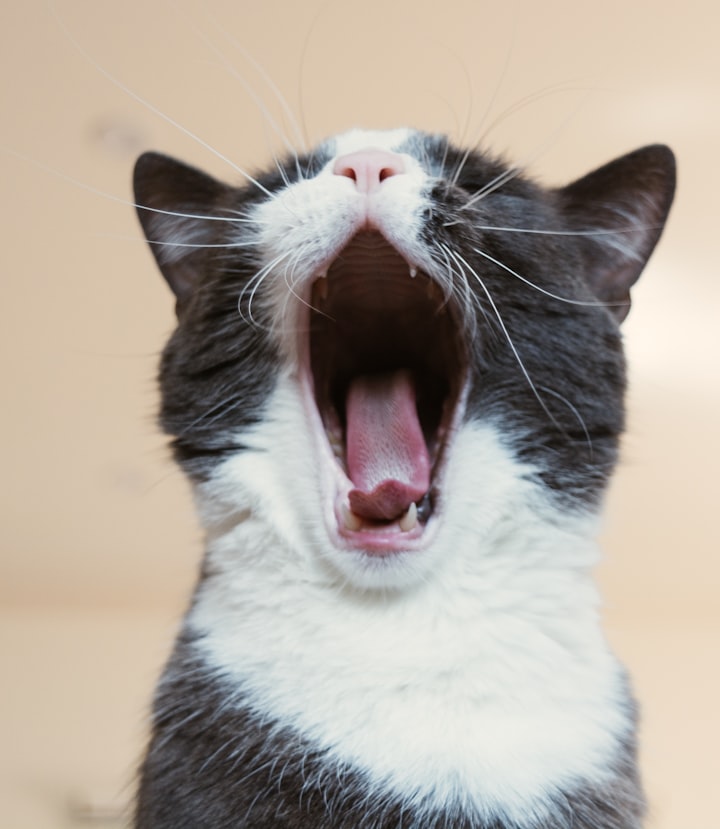20 interesting facts about cats
cats are cute animals

Purring isn't always a sign of happiness: While we often associate purring with contentment, cats also purr when they're in pain or stressed. It's believed that purring can have a calming effect on both the cat and its human companions.
Cats have a special collarbone: Unlike humans and many other animals, cats have a floating collarbone, which allows them to fit through tight spaces and land on their feet after a fall. This flexible collarbone, along with their incredible balance and reflexes, contributes to their graceful movements.
Cats have a dominant paw: Similar to humans being left or right-handed, cats often show a preference for one paw over the other. Studies have suggested that about 70-90% of cats are right-pawed, while the remaining are left-pawed.
Whiskers aren't just for show: A cat's whiskers are incredibly sensitive and are used for navigation and sensing changes in their environment. They're about as wide as the cat's body, helping them gauge whether they can fit through narrow spaces without getting stuck.
Cats have a unique way of communicating: While cats can meow, they primarily use this vocalization to communicate with humans. Among themselves, they use a variety of sounds like chirps, trills, hisses, and purrs to convey different messages.
Cats are crepuscular creatures: This means they're most active during dawn and dusk. Their hunting instincts are naturally tuned to these times, which is why your cat might seem especially playful or energetic during these periods.
A group of cats is called a clowder: While cats are often thought of as solitary animals, they can also be social creatures, particularly if they're raised together from a young age. In such cases, they might form close-knit groups within a household.
Cats have an excellent sense of smell: While not as keen as that of dogs, cats still have a highly developed sense of smell, which they use for hunting, exploring, and identifying familiar scents.
Cats spend a lot of time grooming themselves: On average, cats spend about 30-50% of their waking hours grooming themselves. This behavior not only helps them keep clean but also serves to regulate body temperature and distribute natural oils through their fur.
Cats are adept hunters: Even well-fed domestic cats retain their hunting instincts. They have a high success rate when hunting, owing to their keen senses, agility, and patience. This hunting behavior is often observed in their play, with toys resembling prey animals being particularly appealing to them.
Cats have a unique drinking technique: Unlike dogs and many other animals, cats don't just lap up water with their tongues. Instead, they use a special technique where they touch the tip of their tongue to the surface of the water and then quickly retract it, creating a column of water that they can then catch with their mouth. This method minimizes the amount of water they get on their fur.
Cats have a third eyelid: Known as the nictitating membrane or haw, this translucent inner eyelid helps protect their eyes from dust, debris, and injury. You might catch a glimpse of it when your cat blinks or if they're unwell or feeling sleepy.
Cats have a powerful sense of hearing: Their ears are equipped with over 20 muscles, allowing them to rotate them independently to locate the source of a sound accurately. Cats can hear frequencies as high as 65 kHz, far beyond the range of human hearing.
Cats have a remarkable sense of balance: They are capable of making incredible leaps and landing on narrow surfaces with precision. This ability is partly due to their inner ear, which contains vestibular organs that provide feedback to their brain about body position and movement.
Cats have unique vocalizations for different situations: While meowing is primarily reserved for communicating with humans, cats use a variety of other vocalizations to communicate with each other. For instance, a mother cat might use a specific type of purr to call her kittens, while hissing or growling are signs of aggression or fear.
Cats have a specialized grooming tool: Their tongues are covered in tiny, hook-shaped structures called papillae, which are ideal for grooming and removing loose fur, dirt, and parasites from their coats. These papillae also help stimulate blood flow and distribute natural oils, keeping their fur healthy and glossy.
Cats have a strong sense of territory: They use scent marking as a way to establish and maintain their territory. They have scent glands located in various parts of their bodies, including their cheeks, paw pads, and the base of their tail. By rubbing these areas against objects, they leave behind pheromones that signal ownership and familiarity.
Cats have a unique way of showing affection: While dogs might wag their tails or lick their owners to express affection, cats have their own subtle ways of showing love. Some common signs include slow blinking, head butting (also known as "head bunting"), and curling up next to their favorite humans.
Cats are known for their agility and athleticism: They possess incredible flexibility, allowing them to twist and contort their bodies in impressive ways. This agility serves them well in hunting, climbing, and navigating through various environments.
Cats have a complex social structure: While they're often portrayed as solitary animals, cats can form complex social hierarchies, especially in feral or outdoor cat colonies. Within these groups, they establish relationships based on cooperation, grooming rituals, and territorial boundaries.





Comments (1)
Wow cats. Sometimes hilarious.